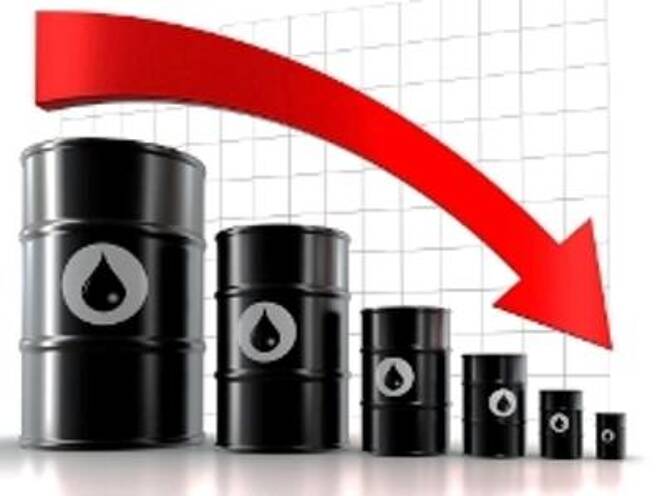Advertisement
Advertisement
OIl Prices Fall Around The World – OPEC Unconcerned While Moscow Suffers
By:
Oil prices continue to fall with WTI crude oil below the 93 level down by 4 cents at 92.82 while Brent oil is trading at 101.52 down y 12 cents in the
Oil prices continue to fall with WTI crude oil below the 93 level down by 4 cents at 92.82 while Brent oil is trading at 101.52 down y 12 cents in the morning session. The stronger US dollar continues to weigh on the commodities with the dollar climbing over the 82 price level on positive housing data and lower inflation. The September WTI was under technical pressure as speculative traders sold off ahead of Wednesday’s contract expiration.
The downward trend was exacerbated by market expectations of a third consecutive week of increases in crude oil supplies at the Cushing, Oklahoma terminal, the price settlement point for WTI. The Cushing build was due in part to a Kansas refinery outage since early August caused by a fire. Reports that the refinery could come back on line more quickly failed to move WTI higher. Overall US crude inventories are expected to fall by 900,000 barrels, according to a poll of analysts by Dow Jones Newswires.
OPEC is not worried about a slide in oil prices toward $100 a barrel, delegates from the producer group said, with current levels seen as acceptable for producers while higher seasonal demand in the coming weeks was expected to support the market. Brent crude fell to a 14-month low of $101.11 a barrel on Monday as investor concerns over conflict in Ukraine and Iraq eased and Libyan output rose. The drop brought prices below the level some in OPEC need for their budget needs.
But delegates from three members of the Organization of the Petroleum Exporting Countries told Reuters the decline in prices was not an immediate concern. “There’s no reason to worry,” said a delegate from one of OPEC’s Gulf members. “We see the dip as a correction. Action will only be taken based on fundamentals and for the time being the price is still fair for producers.” He did not comment on what price would prompt concern in OPEC.
Sanctions against Russia and the loss of their global brand is having a strong effect on the Russian economy and demand for Russia’s lifeline oil. The price of Urals crude oil, Russia’s key export and the lynchpin of its government finances, fell below $100 this week for the first time in more than a year, after plummeting $15 in under a month. Russia relies on hydrocarbon exports for 50 percent of its budget. Already squeezed by Western sanctions over Ukraine and balanced on the edge of recession, a sudden collapse in oil revenue looks like bad news for the economy.
But both the Russian government and the country’s oil majors will easily weather the price drop — provided it is temporary, analysts said Tuesday.
Urals was trading on Tuesday at just below $97 per barrel, but “an economic slowdown will start at $95. If the price were to fall to $80 per barrel it would prompt a crisis, causing further capital outflows, weakening the ruble and pushing investment levels down in the oil industry and related sectors of the economy,” said Valery Mironov, chief economist at Higher School of Economics’ Center for Development.
Fears that violence in Ukraine, Iraq and Libya would cause major supply disruptions are ebbing. Indeed, Russia’s No. 2 oil company LUKoil announced Tuesday its first oil delivery from its Iraqi oil field. At the same time, global supply is abundant and weaker than expected growth in Europe, the U.S. and China means lower demand.
According to Reuters, every $1 fall in the oil price wipes about $1.4 billion off Russian federal tax revenues. That reduces the government’s ability to spend and invest, but the investment programs of Russia’s big oil companies will also come under the hammer if the oil price does not bounce back
About the Author
Barry Normanauthor
Advertisement
